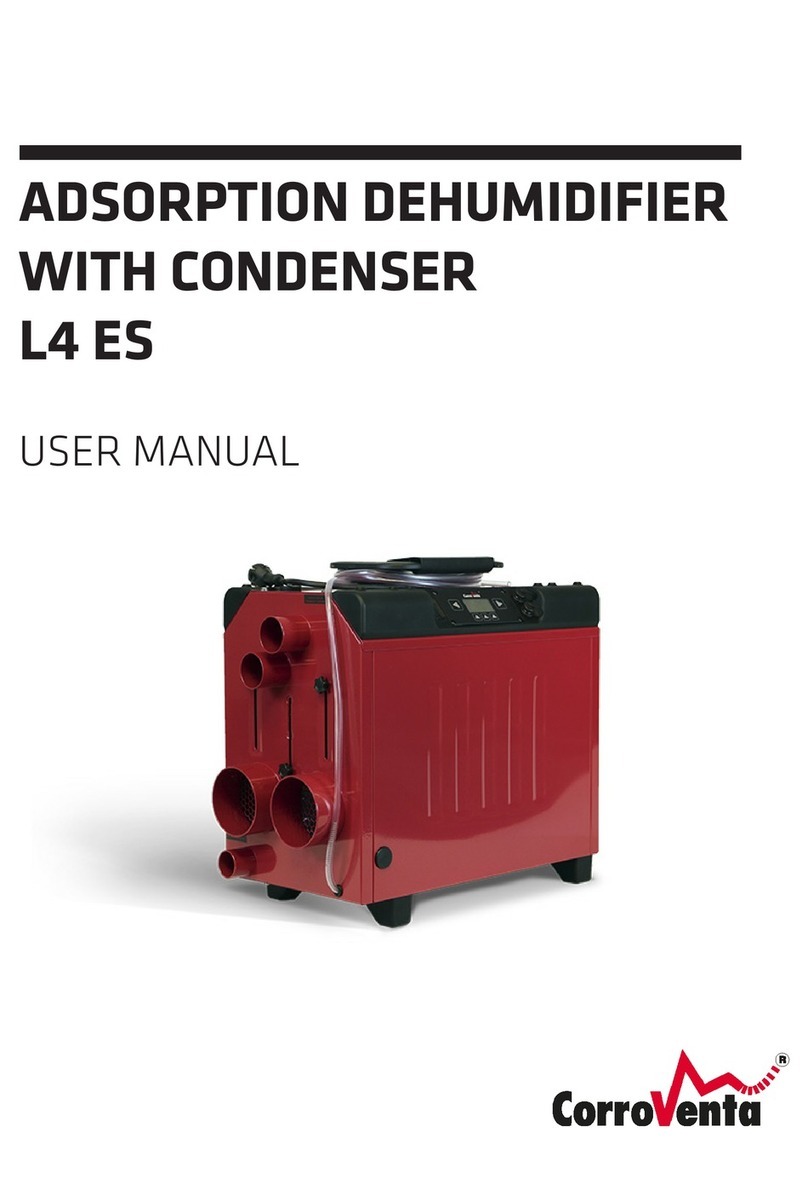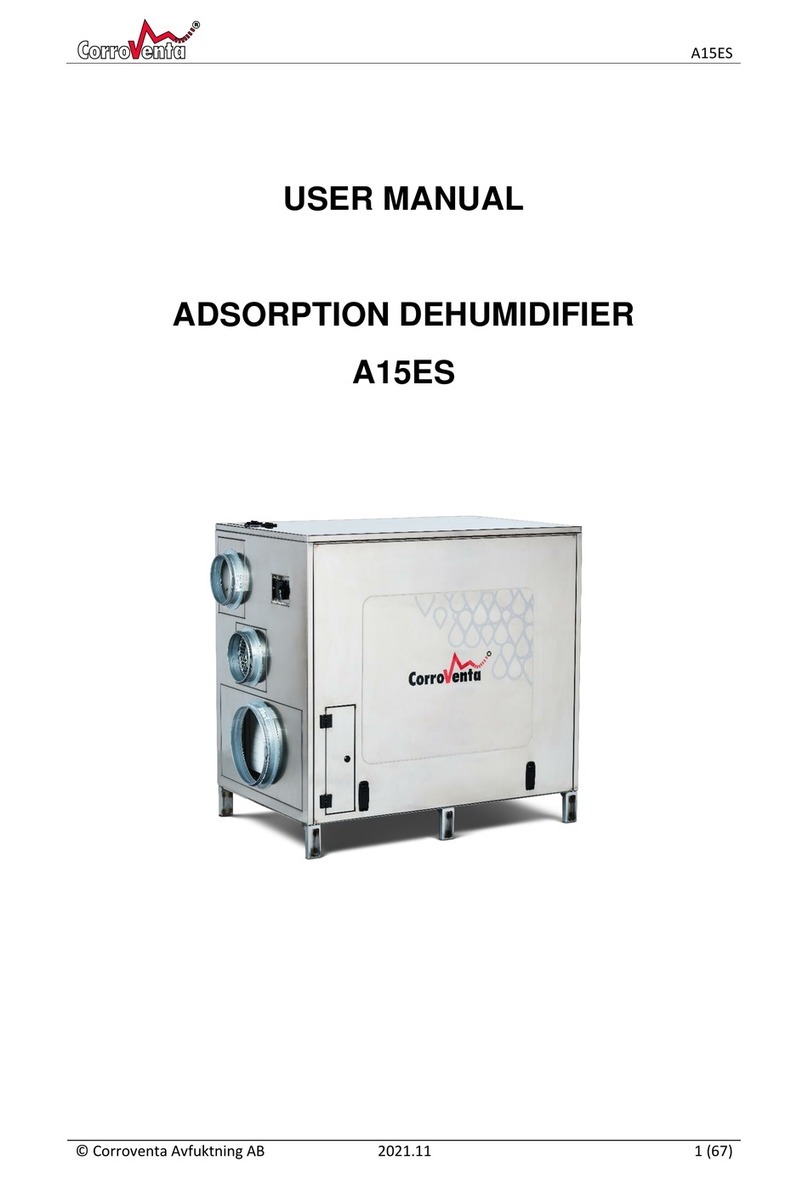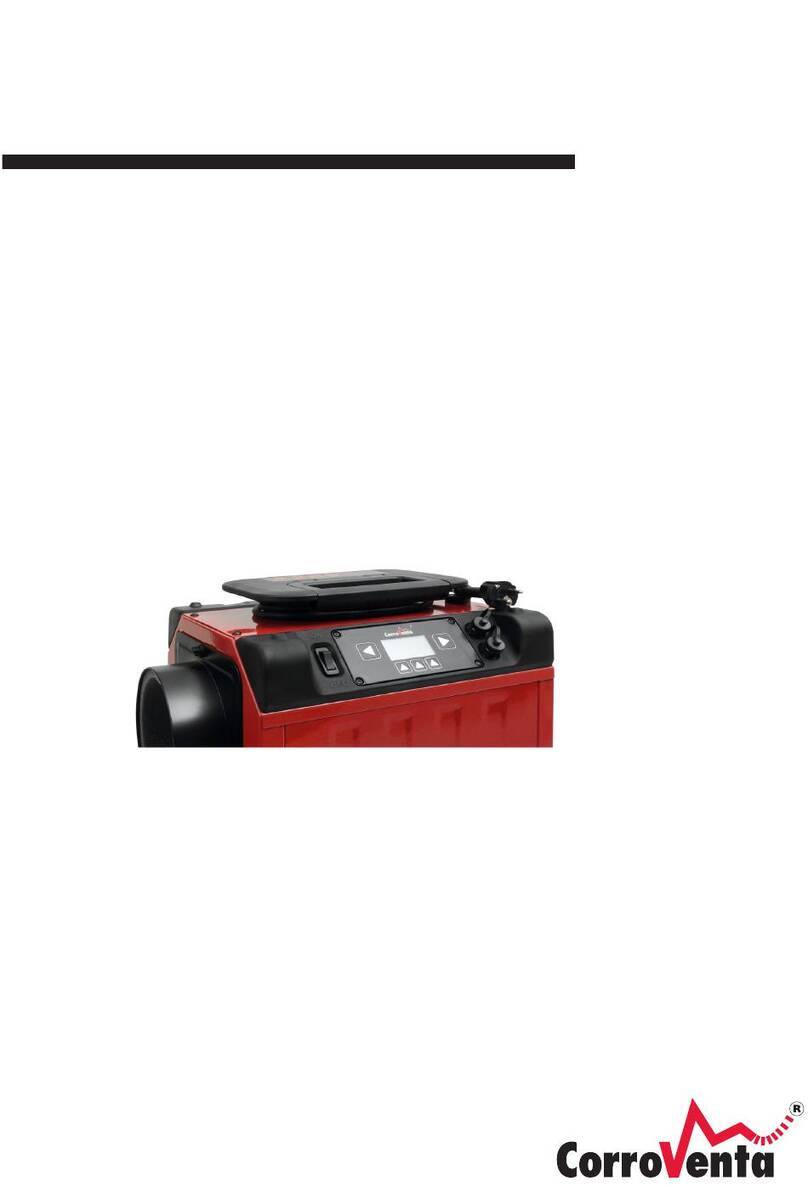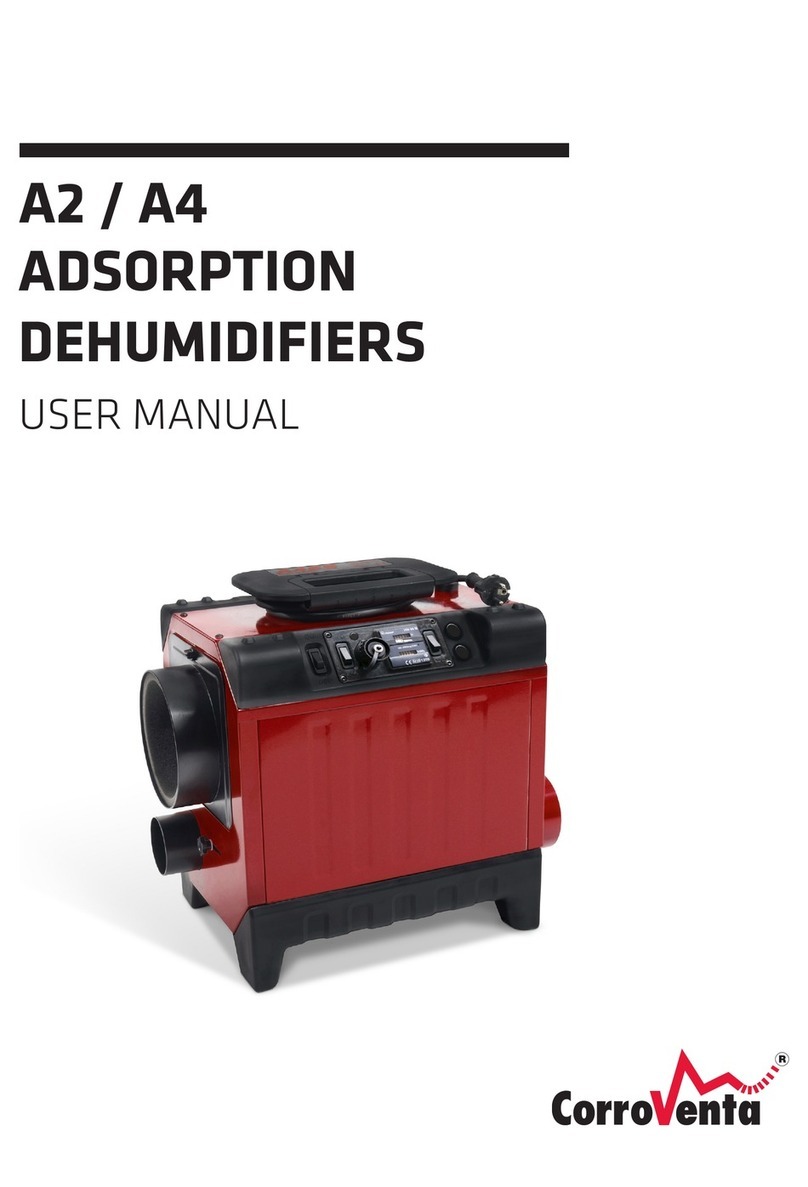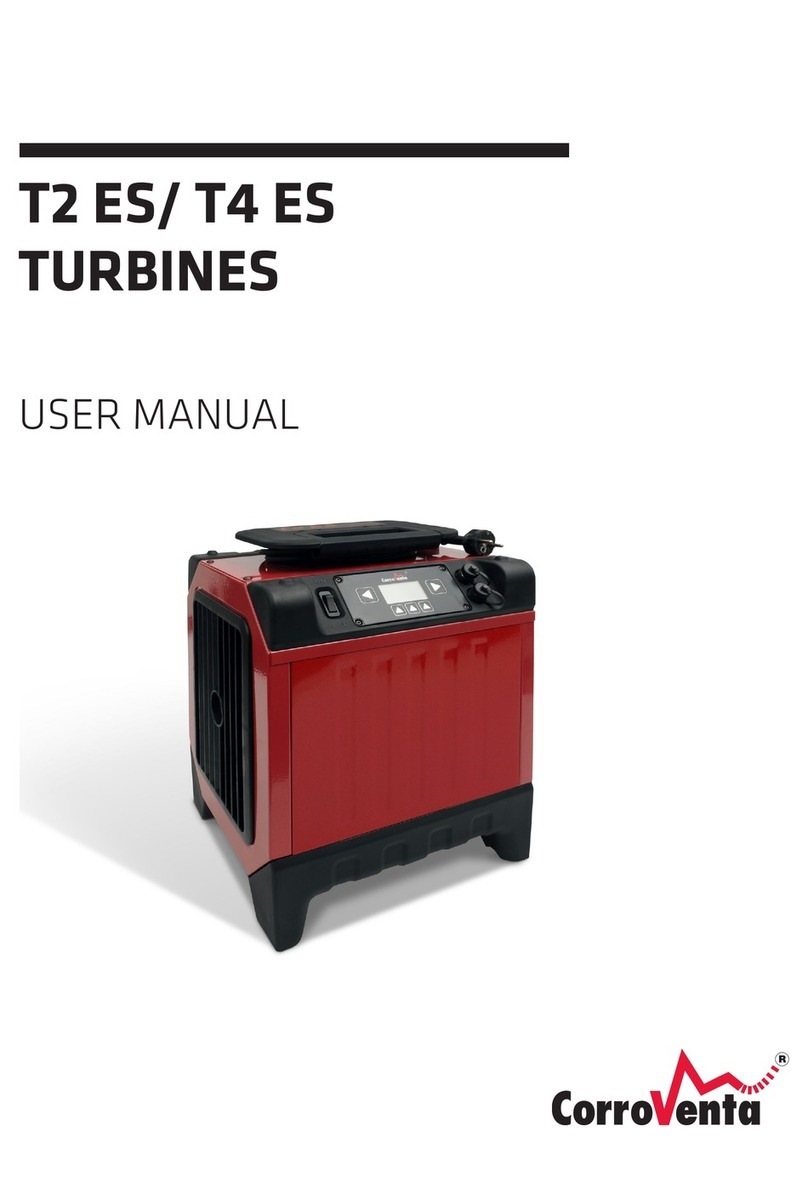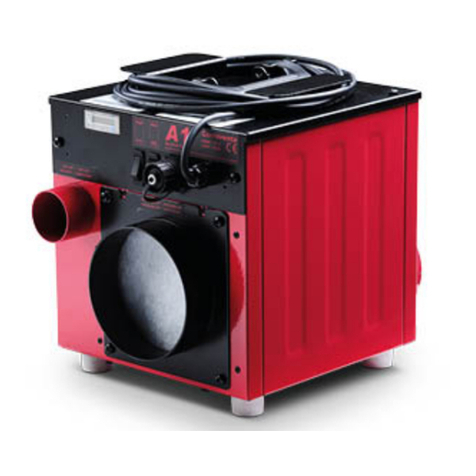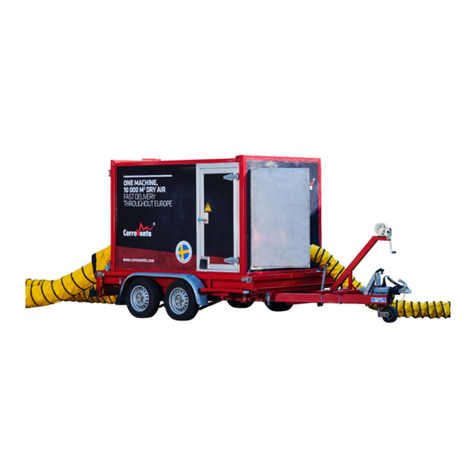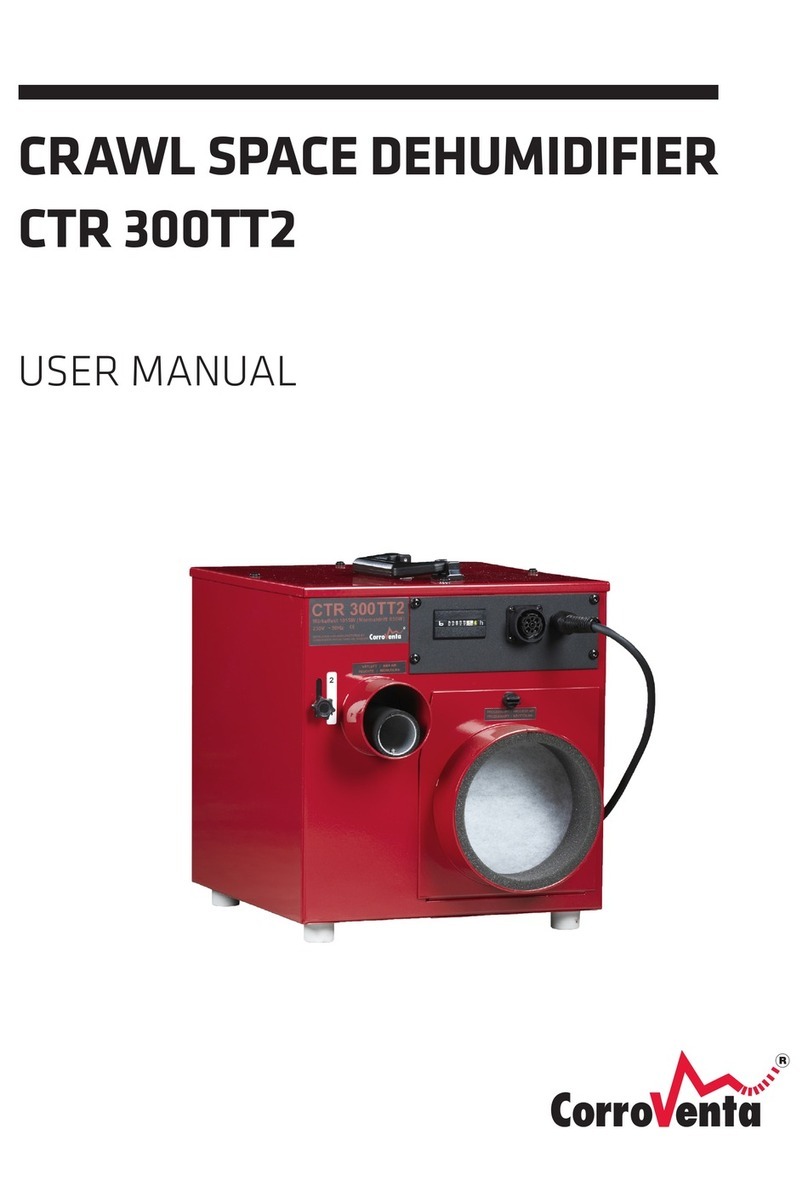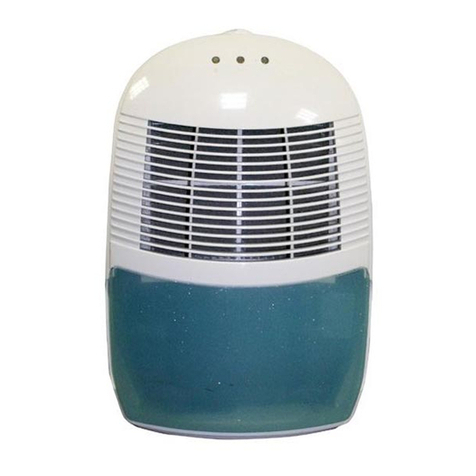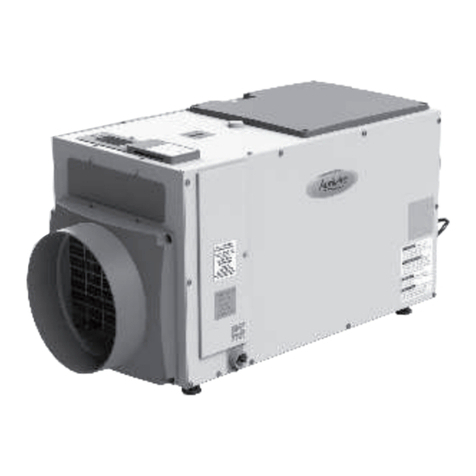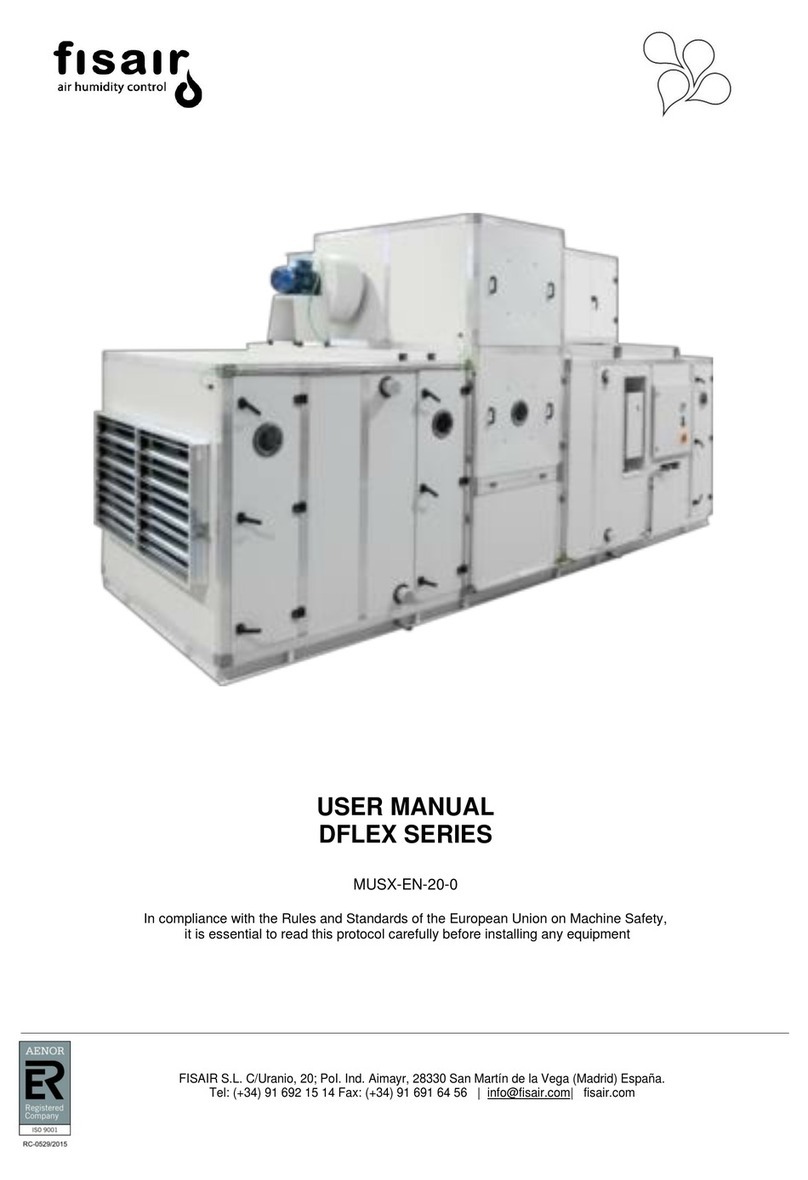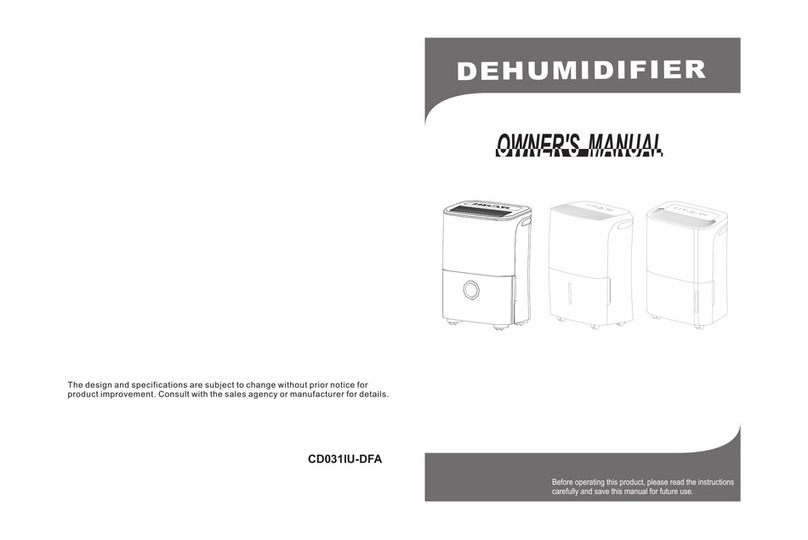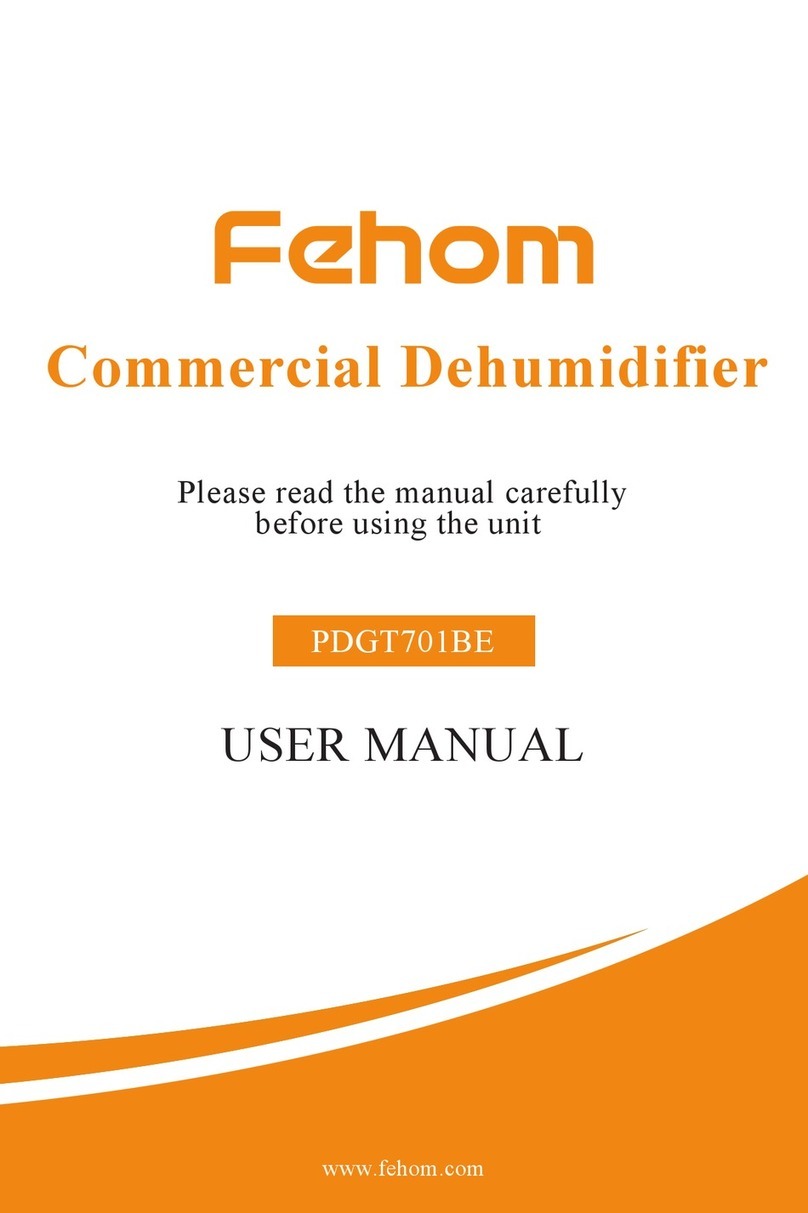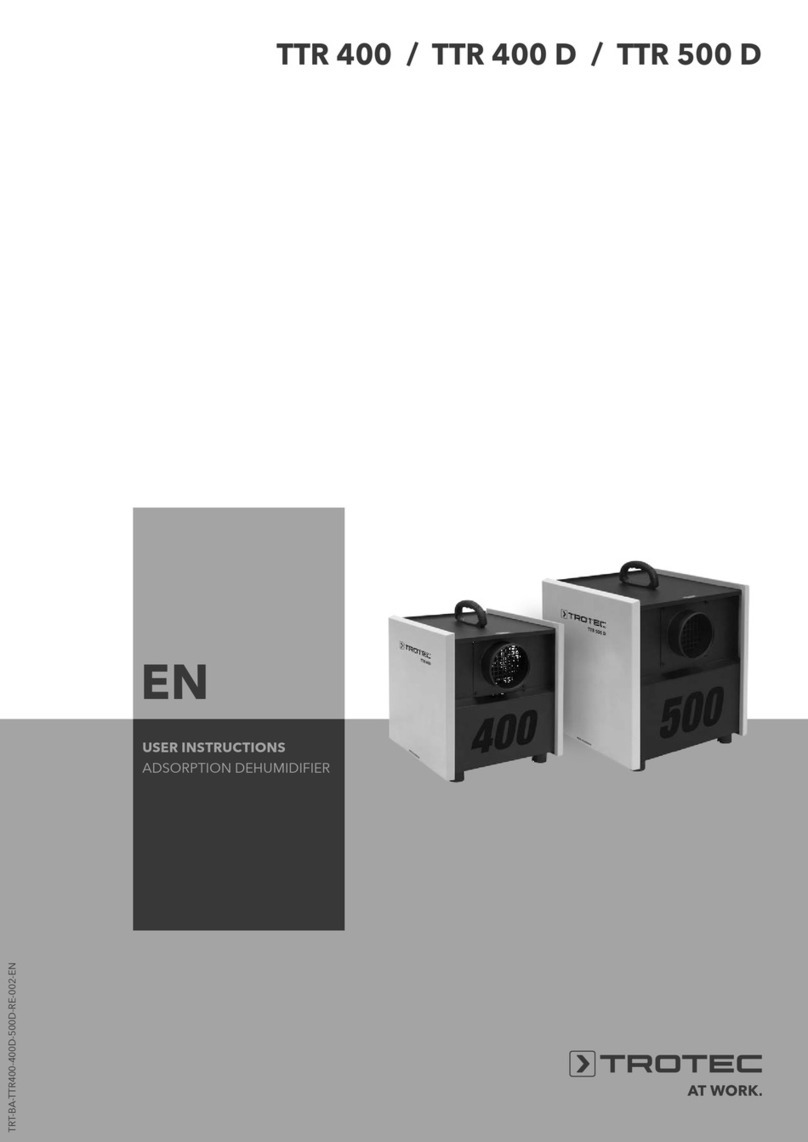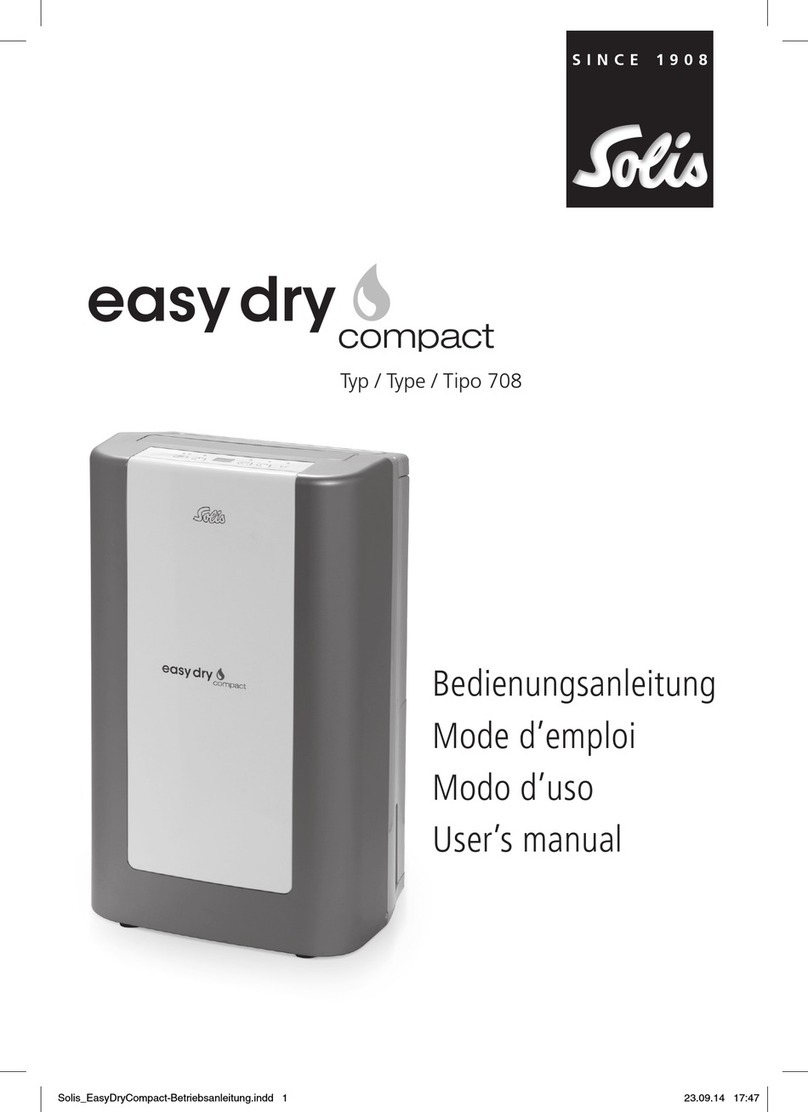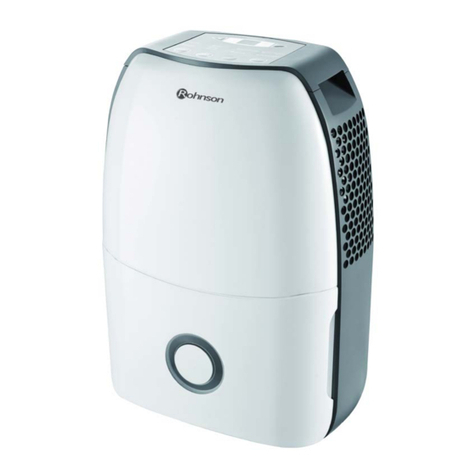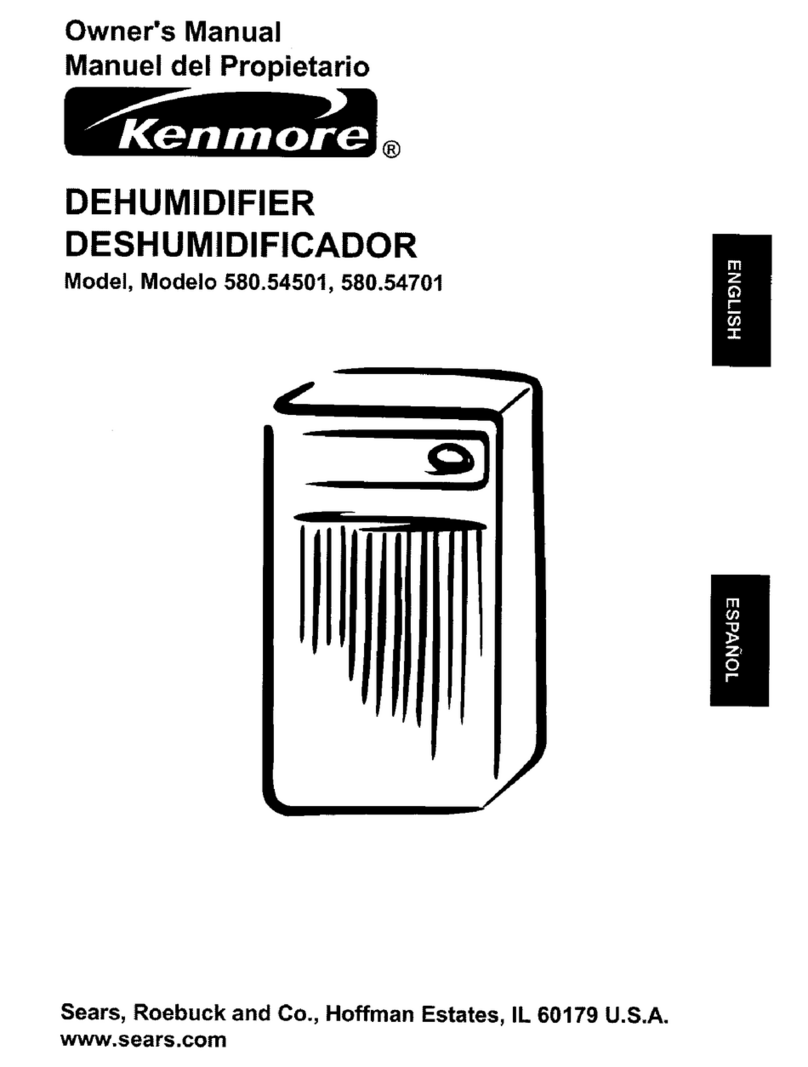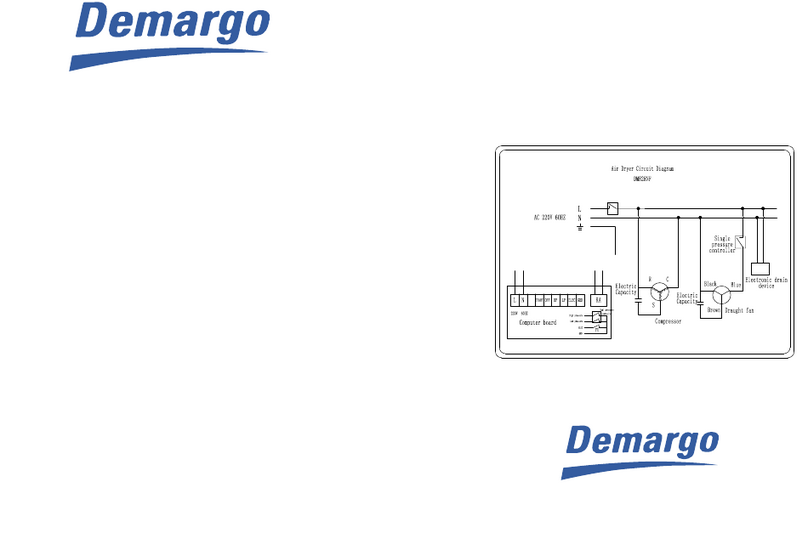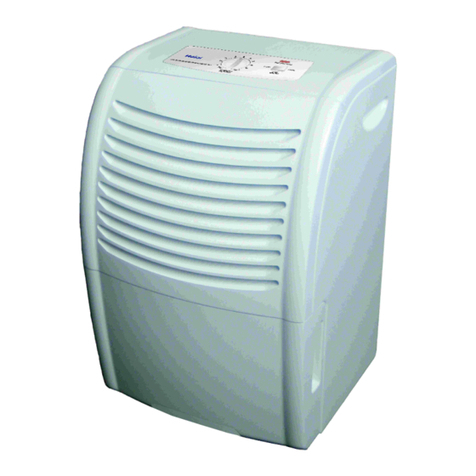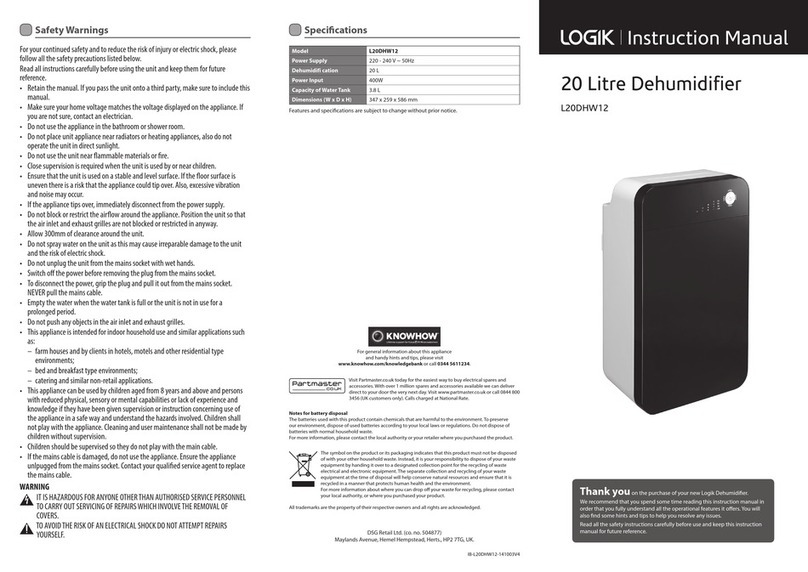- 1 -
1. HOW ARE DIFFERENT MATERIALS AFFECTED BY MOISTURE?
All air contains a greater or lesser degree of moisture. We can’t see it with the naked eye before
it appears in the form of small water drops against a cold surface of metal or glass. But before
moisture is visible, it is already causing problems by affecting materials and manufacturing
processes, causing corrosion and growth of micro-organisms. It can be taken for granted that
the Nordic climate is always humid. Large areas of water, in the shape of thousands of lakes
and the surrounding sea, cause a lot of humidity.
The difficult term of relative humidity
Air moisture is measured in relative humidity (% RH). This is a measurement of how much
water the air holds at a particular temperature. At 100% RH the air is saturated and the mois-
ture falls in the form of small water droplets. But steel starts to corrode at 60% RH. At 70%
RH there is a risk of moulding. A rule of thumb is that 50% RH is a good climate for most
materials. But in the North, it is rarely 50% RH. In most places in the Nordic countries the aver-
age for the year is around 80% RH. The high relative humidity does not disappear in cold Nordic
climates either. It can be equally high in winter or summer. And it is the relative humidity that
counts.
2. HOW CAN ONE EFFECTIVELY ELIMINATE MOULD AND ODOURS IN A HOUSE WITH
A CRAWLSPACE?
When outdoor air, particularly during the warm times of year, enters the crawl space (D) under
the house it, is cooled by the cool environment and the relative moisture increases and, there-
with, the risk of mould attack and odours. By drying the air, so that the relative humidity
remains below 70%, mould can be prevented.
The air in the crawl space is sucked into
the dehumidifier (A). The dry air (B) must
be distributed in such a way that the crawl
space remains dry. At the same time as
the dehumidifier dries all the air it
removes all moisture (C) from the crawl
space to the surroundings.
